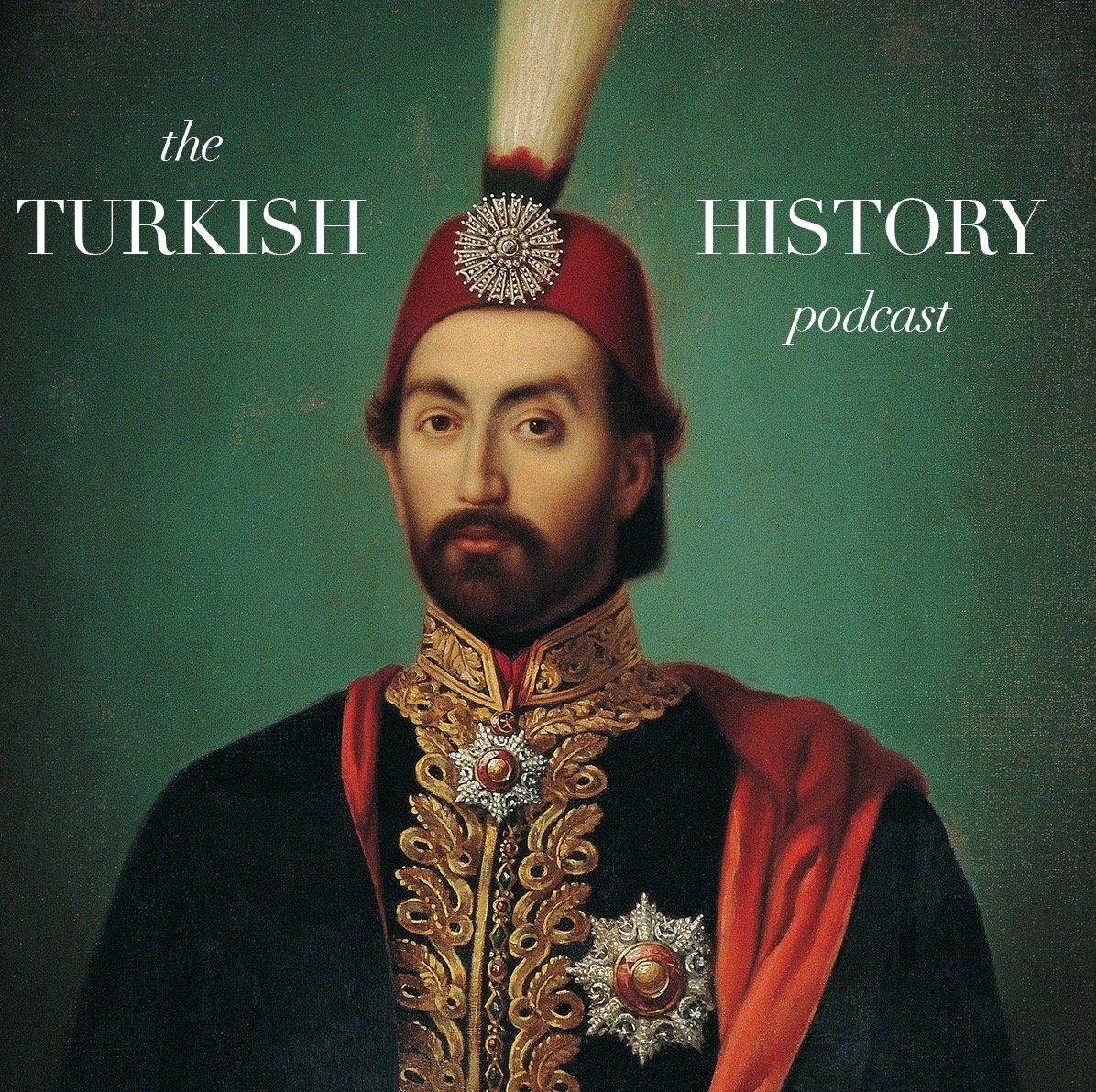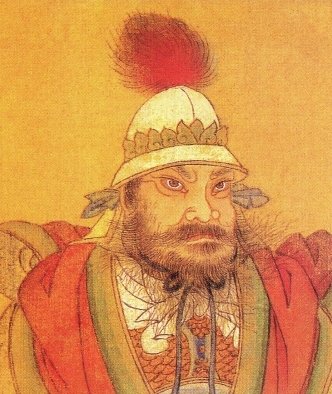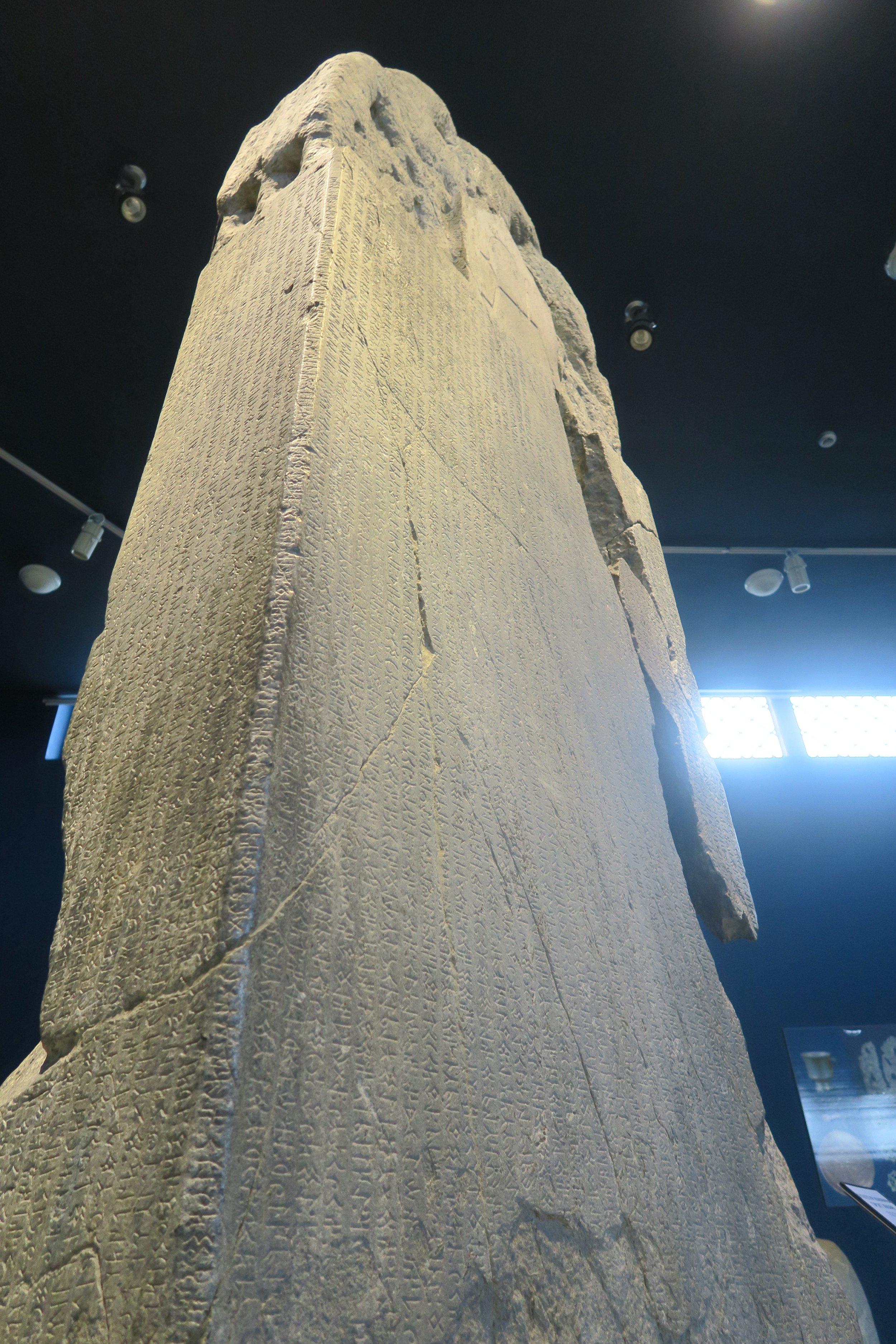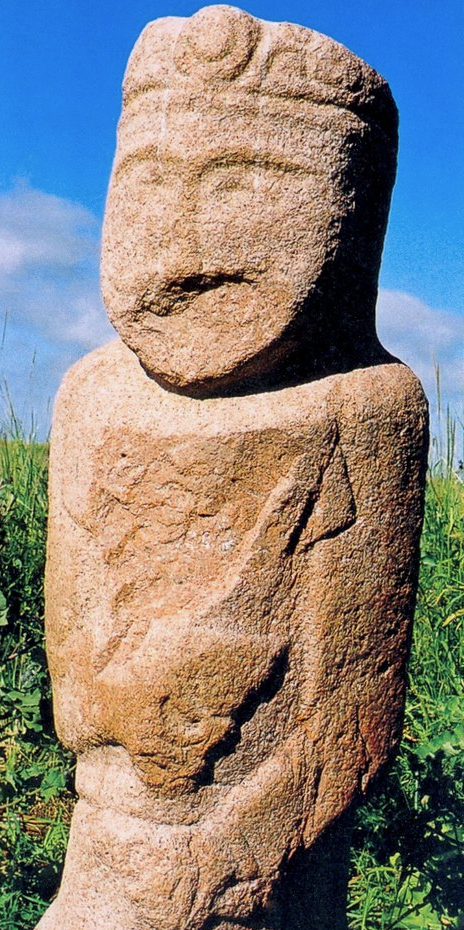From 500 AD to present day
Welcome to the Turkish History Podcast, a bi-weekly podcast tracing the history of the Turks, from the Göktürk Khanate through the Turkish Republic.
Episode 27
The Nawakiyya
After Alp Arslan's ascension to the throne, the Heroic Lion is forced to ride East to put down a nascent revolt in Khorasan and to defeat his brother Kavurt (twice). Alp Arslan also bounces back to the Caucasuses to re-invade Georgia. At the same time, tensions rise between the increasingly "cooking" court and the tribes, and a new tribal confederation of Turkmen, the Nawakiyya, forms in northern Syria. At times allied with the Shia Emirs of Aleppo and even the Fatimid Caliphs of Egypt, the Nawakiyya raid deep into Anatolia. Meanwhile, the constant Turkish raiding of Anatolia results in a new Emperor of the Romans, Romanos Diogenes, taking the purple. The complex multi-way relationship between the Seljuk Court, the Nawakiyya, the Emirate of Aleppo, the Fatimid and Abbasid Caliphs, and the Roman Empire is upended. And the Heroic Lion marches West to discipline the Nawakiyya and the Emir of Aleppo - as Romanos Diogenes marches East to a certain fortified city named Manzikert.
Coin minted by Romanos Diogenes showing the Emperor.
Episode 26
The Heroic Lion
After the death of Tughrul, the founder of the Great Seljuk Empire, the inevitable succession crisis breaks out. A son of Chaghri named Alp Arslan manages to quickly win the 4-way civil war and succeeds his uncle Tughrul as the Sultan of what is by now the most powerful state in the world. To secure the loyalty of his wild Turkmen followers, Alp Arslan then gathers the mighty hordes of the Oghuz and invades deep into the Caucuses and Anatolia. The Turks cut a trail of destruction across the region, and ultimately come before the walls of the great Armenian city of Ani, which is brutally sacked. Alp Arslan is thus secured on his throne - and the stage is set for a conflict in a decade's time at a place called Manzikert...
Persian miniature depicting Alp Arslan.
Episode 25
The Sun of Fortune
After conquering Baghdad without a shot being fired, Tughrul sets forth to fulfill the promises made in Baghdad. He aims to conquer all of Iraq, Syria, the Levant and even Egypt. To overthrow the Fatimid Caliph in Cairo and truly re-unite the Muslim World. But though his initial campaigns in Iraq are successful, the Oghuz tribes find the climate of Iraq intolerable. Revolts against the Seljuk court arise, and the aging and childless founder of the Great Seljuk Empire faces down his own destruction and the inevitable succession crisis that will surely follow his death...
The tomb of Tughrul.
Episode 24
The King of East and West
Tughrul continues his conquest of Iran and begins truly building the Seljuk state, which is now fast on its way to becoming the Great Seljuk Empire. He achieves pre-eminence over his brother Chaghri to become the paramount leader of the House of Seljuk and invades Anatolia, attacking a certain well-fortified city that happens to be named Manzikert. And as Buyid power evaporates in Iraq, Tughrul comes to the aid of the Caliph Al-Qa'im at the urging of the Abbasid vizier Ibn Muslima, leading to the crowning victory of Tughrul's career and his coronation as the King of East and West.
Persian miniature depicting Tughrul.
Episode 23
The First Seljuk Sultan
In the aftermath of the Battle of Dandankan, Tughrul expands west into Iran. But instead of being a traditional barbarian warlord on horseback, Tughrul is committed to ruling in the existing Perso-Islamic tradition. To become a Khan-Sultan. And tension quickly arises between his role as Khan and his role as Sultan. As Tughrul presents himself as the restorer of order and Sunni orthodoxy in his quest to conquer Iran, the wild Oghuz tribes are driven by the need for pasturage and are pushed along by Tughrul into Anatolia - setting up a conflict between the Turks and the Roman Empire.
Coin of Tughrul
Episode 22
Seljuk
As the steppe world falls into chaos, the Oghuz Yabgu State begins to fall apart and a leader of the Kınık tribe of the Oghuz named Seljuk emerges. Fleeing the chaos of the steppe world, Seljuk leads a small band of his followers south and establishes his people in the lands of Islam. As more Oghuz flee south, they join with Seljuk and a new tribal confederation emerges, taking the name of the founder of the dynasty. The Seljuks become enmeshed in the wars and politics of the Karakhanid Khanate and the Ghanzavid Ghulam State. Seljuk dies at the age of 107, but his dynasty endures, and the successors to Seljuk, his son Musa Yabgu and his grandsons Tughrul and Chaghri, lay the foundations of the Great Seljuk Empire.
Approximate locations of key places in the initial rise of the Seljuks
Episode 21
The House of Afrasiyab
The mass conversion of the Turks to Islam begins as the rise of the Samanid Emirate and its great Jihad transforms Central Asia. On the steppe, the sophisticated Karakhanid Khanate emerges - the first Muslim Turkish state in history, with a state based on Islamic, Turkish and Chinese models of government. Meanwhile, the Samanid Emirate starts falling apart, dismantled by its own Turkish slave generals from within and conquered by the Karakhanids from without. And as Central Asia is remade, a certain minor and obscure Oghuz clan begins moving south...
Early Karakhanid coins showing the combination of Chinese and Uyghur models with Arabic/Islamic inscriptions.
Episode 20
The Princes of Persia
As the Caliphate splinters into a patchwork of emirates, a new emirate arises in the far north east of the lands of Islam, in the old Silk Road cities of Transoxiana. Descended from an obscure Persian noble family with roots stretching back to the Sassanid Empire, the Samanid Emirate quickly becomes the most powerful Emirate in the Caliphate. A golden age of science and Persian culture unfolds in Central Asia, as does a brutal jihad against the pagan Turks. And the Samanids come to assemble a great Turkish slave army - with totally predictable consequences...
Mausoleum of the Samanid royal family in Bukhara.
Episode 19
Intermezzo
The Anarchy continues to drag on after the Siege of Baghdad. In the provinces, more and more power has fallen into the hands of the Emirs as the center has weakened. Al-Mutazz briefly manages to restore the power of the Caliph for about a year, before he too is done in by the Turkish slave army. A succession of puppet Caliphs follows him. Out of the original leadership of the slave army, only Musa ibn Bugha manages to survive. Together, Abu Ahmad and Musa manage to put down the revolts against the Caliph that have turned Iraq into a war zone and build a stable regime. But though they reconsolidate control of the center over Iraq, in the 10 years of the Anarchy, the Caliphate has been fundamentally changed. The spiritual and temporal powers of the Caliph have been sundered, and the Empire of Faith has been transformed into a patchwork of Emirates.
Map of the Caliphate at the end of the Anarchy and the beginning of the Intermezzo.
Episode 18
The Anarchy
The Anarchy at Samarra begins. Following the assassination of Al-Mutawakkil by a desperate group of Turkish slave soldiers, a son of the late Caliph is put on the throne by the slave army. But his reign proves short, and quickly divisions emerge between rival Turkish slave generals. Eventually, following an outbreak of horrific violence, rival Turkish armies prop up competing Caliphs in Samarra and Baghdad. The Anarchy rages as Baghdad itself is besieged by the Samarran Turkish slave army - and the Caliphate itself begins to splinter.
Map of Baghdad at the time of the siege.
Episode 17
Samarra
An era of unprecedented intellectual and cultural flowering, the Golden Age of Islam, unfolds in the Abbasid Caliphate. But fearful of an emerging dynasty of powerful Eastern governors, the Tahirid dynasty, the Abbasid Caliphs build a great Turkish slave army. In order to house the Turkish slave army, a new capital city is constructed at Samarra. In Samarra, the Turkish slave army becomes increasingly politically powerful. Things come to a head during the reign of the Caliph Al-Mutawakkil, as the Turkish slave soldiers decide that the time has come for the slaves to become the masters.
The famous spiral minaret of Samarra.
Episode 16
Rainstones
The Oghuz Turks emerge in the new steppe world created by the Battle of Talas and the An Lushan Rebellion. As refugees fleeing the East, the Oghuz arrive in the lands around the Syr Darya River - and promptly ally with the Khazar Khanate to drive the local Pechenegs out. Now secure in their new homeland, the Oghuz build their first state - the Oghuz Yabgu State on the borders of the Abbasid Caliphate. The interactions between the Oghuz and the Abbasids create a new steppe world, and will ultimately come to transform the Abbasid Caliphate as well.
City plan of the Oghuz Yabgu State’s capital of Yenikent (meaning “New City”).
Episode 15
Talas
The internal political instability within the Tang Empire comes to an end in the reign of Emperor Xuanzong. Now back on their feet, the Tang can look across their frontiers and begin to project Chinese power across Eurasia once again. The Tang hobble the Türgesh Khanate, which has fallen into civil war after the death of Suluk Khan, break the Second Khanate under the tottering regency of El Bilge Kahatun, and humble the Kingdom of Tibet. But the good times don't last. The Tang must now contend with the newly-established Abbasid Caliphate and face down an existential revolt led by the half-Turkish An Lushan.
Unflattering illustration of An Lushan from a Chinese painter
Episode 14
Black Raiments
On the eastern frontier of the Umayyad Caliphate, the state has become increasingly hated by the local Khorasani Arab settlers and the Mawali converts. Al-Harith's message that there is no difference between Arab and non-Arab Muslims reverberates throughout the frontier region. After the fall of Suluk Khan, the new governor of Khorasan, Nasr ibn Sayyar, attempts to stabilize the frontier region through reform. But it is too late - when tinder and kindling have been building for years and you introduce oxygen, all that it takes is a spark. The East erupts in the fire of revolution, as the enigmatic Abu Muslim picks up the torch from Al-Harith and burns down the whole Umayyad Caliphate.
Persian miniature showing Abu Muslim
Episode 13
Bitter Herbs
Following the Battle of the Defile, Suluk Khan reigns supreme in Transoxiana. With his rule in Central Asia secure, Suluk turns east and spars with the Tang Dynasty. Meanwhile, Umayyad attempts to deal with this mighty Türgesh Khan increasingly destabilize the eastern frontier of the Caliphate, sparking a revolution. Suluk Khan returns to grapple with the Umayyads in alliance with the revolutionary leader Al Harith ibn Surayj - and finally meets his end.
Map showing approximate locations of key places in Suluk Khan’s final campaigns and the revolt of Al Harith ibn Surayj overlaid on top of modern political borders.
Episode 12
The Father of the Fight
In the aftermath of the Day of Thirst, Suluk Khan acquires a new nickname from his Arab opponents - Abu Muzahim, meaning the Father of the Fight. Suluk leads the Türgesh into war against the Umayyads, fighting a series of Arab governors of Khorasan in the field, besieging Umayyad garrisons and facing off against a great Umayyad invasion across the Amu Darya. Meanwhile, the Umayyad attempts to deal with the Father of the Fight sow the seeds of the Caliphate's undoing.
Map showing approximate locations of key places in the Türgesh-Umayyad war overlaid on top of modern political borders.
Episode 11
The Day of Thirst
After decades of fitna, the armies of the Umayyad Caliphate again begin marching forward. Under the great general Qutayba and his successors, the Arabs invade Central Asia conquering all before them. Meanwhile, in the heartland of the old Western Göktürk Khanate, the great Suluk rises from obscure origins to become the leader of the young Türgesh Khanate. These two great powers collide, and Suluk Khan launches a war that will last for almost 20 years and will forever alter the history of the Turks and of the Islamic World.
Soghdian mural likely depicting Türgesh mounted warriors
Episode 10
Discord
The shocking conquests of the early Muslims ultimately lead to the outbreak of civil war in the victorious camp of Islam. The Messenger's son-in-law Ali is opposed by Aisha, the Mother of the Faithful, and by the cunning Muawiya. A new civilization, based on a new faith and the heritage of Greek, Roman and Persian cultures begins to come into existence, and a second civil war tears the state apart again before the armies of Islam can again continue their march forward.
Persian miniature illustrating the Battle of the Camel
Episode 9
The Messenger
Far from Central Asia, a new religion arises in the deserts of Arabia. The Prophet Muhammad's new faith unites the Arabs, and the conquests of the Armies of Islam shock the world. Byzantium and Iran, horribly weakened by war, famine and disease are powerless in the face of these conquerors. Iran falls, and the new religion of the Messenger is brought to the gates of the Turkish world.
Calligraphy of the name Muhammad
Episode 8
The Wise Khan
Fueled by a burning resentment against the Tang, the Second Khanate is born in the East. Aiming to restore the glory of the First Göktürk Khanate, the Second Khanate launches a restorationist project to reconquer the whole steppe - before running up against the armies of conquest of a brand new religion. But before its fall, the Second Khanate under the great Bilge Khan carves its story into stone, to be discovered and embraced by the Turks centuries later.
Kültegin inscription carved by Bilge Khan’s orders in memory of his brother
Episode 7
The Protectorate General to Pacify the West
The Tang armies march west to take on the Western Khanate after defeating the Eastern Khanate, just after the assassination of Tong Yabgu Khan. The Western Khanate faces this mighty new dynasty and is wracked by internal chaos and division. And we finally close out the story of the Göktürk Khanate - the first Turkish state in history.
Map of campaign against Ashina Helu
Episode 6
The First Turkish Emperor
In the East, the Sui Dynasty collapses and the Eastern Göktürk Khanate regains the top spot as the premier power in East Asia. But out of the ashes of the Sui, a new dynasty arises - a powerful dynasty founded by Sinicized Turks. And a dynamic Emperor of this new dynasty comes into conflict with a reforming Khan on the steppe to determine who will be the master of the East.
Emperor Gaozu, founder of the Tang Dynasty
Episode 5
The Ten Arrows
In the aftermath of Tardu's death, the Göktürk Khanate is broken in two. The Western half comes under the control of ten powerful tribes - the On Ok, meaning the Ten Arrows. The Western Khanate invades Iran in alliance with Byzantium, bringing the Sassanid Dynasty to its knees.
Soghdian mural visually representing the Ten Arrows of the Western Khanate
Episode 4
… Divided We Fall
Tardu succeeds his father Istami in the West as Taspar Khan dies in the East. Tardu launches an invasion of Iran - and sparks a succession crisis which permanently breaks the Göktürk Khanate in two.
A carved statue of one of the Western sub-Khans under Tardu.
Episode 3
United We Stand…
Muqan and Taspar Khan conquer in the East, and the Göktürk Khanate reaches the zenith of its power. A powerful state of unseen sophistication for the steppe world is established.
Surely it’s only onwards and upwards from here…
A map of the Göktürk Khanate at its maximal extent, the zenith of its power, under the reign of Taspar Khan.
Episode 2
Go West Young Man
The new Göktürk Khanate rides west, inaugurating a series of stunning conquests and bringing the Turks into contact and conflict with the Byzantine and the Sassanid Empires.
Turkish horseman carved on the tomb of a Soghdian nobleman.
Ergenekon
The origins of the Turks and the world from which they emerged, ending with the revolt of the Turks and the establishment of the Göktürk Khanate - the first Turkish state.
Episode 1
The tamga (sigil) of the Ashina clan



























